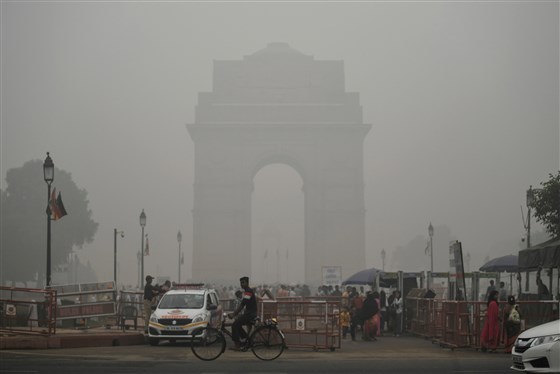

The flu season is prolonged this year in many parts of northwest India because of back-to-back western disturbances (WDs). Temperature data with India Meteorological Department (IMD) for March and April in Delhi shows last year the highest maximum temperature recorded in March was 39.2 degrees C recorded on March 31 compared to maximum of only 33.3 degrees C recorded on March 26.
The average maximum temperature for March was similar in both years around 28.2 degrees C, 1 degree below normal. But in the first week of April the average maximum temperature this year is 32.7 degrees C compared with 36.61 degrees C last year. The highest maximum temperature recorded last year till April 7 was 39.3 degrees C compared to 35.8 degrees C this year. The weather continues to be nippy in April.
Interestingly, nights also continue to be mildly chilly. The highest minimum temperature recorded in March last year was 21 degrees C on March 31 compared to 19.6 degrees C recorded on March 27 this year. The average minimum temperature in the first week of April is 16.8 degrees C this year compared to 19.7 degrees C last year.
“We had four WDs last April but more than six WDs this year. The WDs brought a lot of rain also this year. In March we got 109.67 mm rain this March which is the highest since 1901. Wind speed has also been moderate at about 20 to 30 kmph. This is why maximum temperature hasn’t risen as it should have. On April 7 also many neighbouring parts of Delhi received rains due to a WD once again bringing down maximum and minimum temperatures,” said Kuldeep Shrivastava, head, regional weather forecasting centre.
Similar trends have been observed for the entire northwestern region and even other parts of the country. “The summer heat hasn’t started and temperature hasn’t started picking up yet even in places which get very hot by now like parts of Rajasthan, Odisha, Maharashtra, some areas of Central India,” said RK Jenamani, senior scientist, national weather forecasting centre.
“Its thought that high humidity and low temperature is favourable for the spread of certain viral infections. But the correlation between temperature and these infections is still a matter of conjecture. There are no scientific studies clearly establishing the link. But what we do know is that March-April and September-October are pollen or allergy season when asthma and certain respiratory conditions aggravate,” said Dr BK Tripathi, professor of medicine at Safdarjung Hospital.
IMD’s Wednesday bulletin said a western disturbance is likely to affect western Himalayan region on April 9 and 10. Also an induced cyclonic circulation is likely to form over central Pakistan and neighbourhood around April 10. “Under its influence, scattered to fairly widespread rain/snow is likely over Western Himalayan Region and isolated rain/thundershowers over Punjab, Haryana and Chandigarh on April 9 and 10. Thunderstorm accompanied with lightning, hail and gusty winds (speed reaching 30-40 kmph) very likely at isolated places over Western Himalayan Region during next two days.” Another WD is likely to impact the region on April 13.